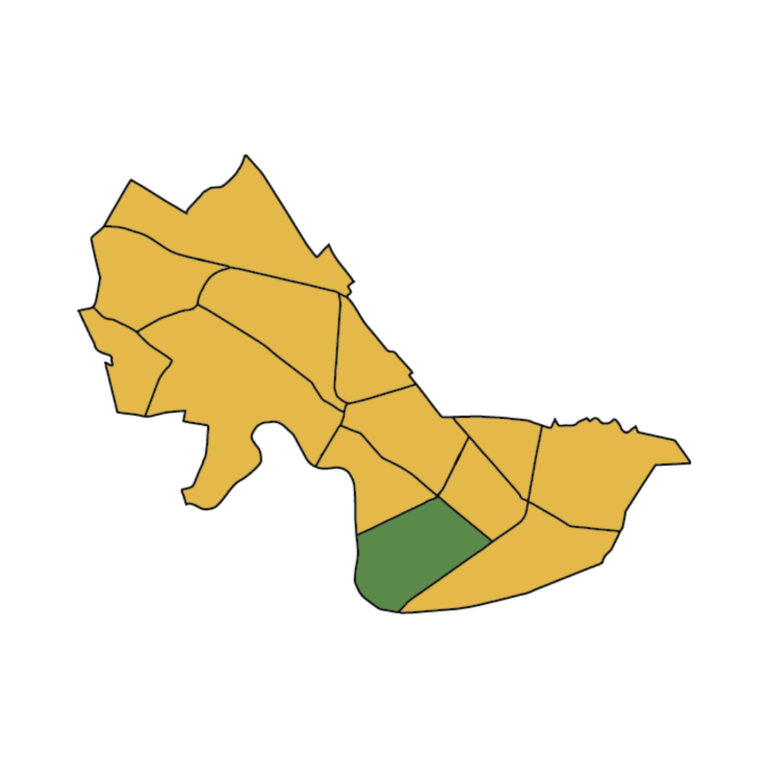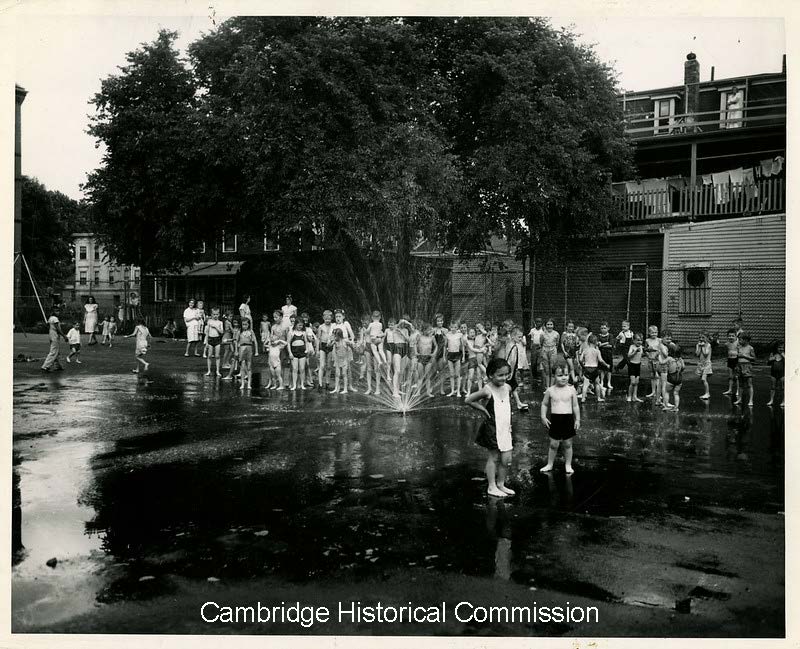
Cambridgeport History Hub
In this Hub
A Brief History of Cambridgeport
In the late 17th century, much of the land that now makes up the Cambridgeport neighborhood was owned by Sir William Phipps, an immigrant from Bristol, England, who had made his fortune by discovering a sunken Spanish treasure ship in the West Indies. Upon arriving in Massachusetts, Phipps married a Boston woman and began to buy up property in Cambridge; soon he owned most of the eastern part of town.
In the wake of the Revolutionary War, much of this land was taken from Phipps’ descendants, who had allied themselves with the Tory cause. By the turn of the 19th century, the Soden, Inman and Boardman families owned three large farms making up the majority of Cambridgeport. Its major road, Main Street, connected the neighborhood to New Hampshire and Vermont to the north, allowing for products from these areas to be transported to Cambridge for shipment by boat along the Charles River and out to the Atlantic seaboard.
As commerce grew along Main Street, merchants and civic leaders began to champion the development of the waterfront. Canals and piers were built to handle the increase in water-borne trade, and two of the most prominent Cambridgeport land owners of the early 19th century – Francis Dana and Leonard Jarvis – began construction of a dike and drainage system to make the neighborhood’s marshland available for building.
These developments, along with the construction of the West Boston Bridge in the 1790s, led to a greater economic connection of the neighborhood to other areas of Massachusetts and New England and to a distinct Cambridgeport identity that prompted residents to seek political independence from the rest of the town.
A petition was presented to the state Legislature in 1842 requesting that Cambridgeport, East Cambridge and Old Cambridge be designated separate towns. Although this petition was ultimately unsuccessful, Cambridgeport residents retained their sense of neighborhood cohesion well into the 20th century.
By the mid-19th century, industrial production had taken root in Cambridgeport. While many contemporary Cantabrigians do not recognize the term “Greasy Village,” their counterparts a century ago would have been all too familiar with this nickname for the neighborhood. In the 1850s, Cambridge companies such as Reardon’s and Alden Speare’s Sons made primarily candles in their factories. But by the late 1800s, as candles gave way to gaslight, these companies began to focus more on lamp oil and soap. Lever Brothers, which had long been successful in England, entered the U.S. market with a Cambridge factory in the 1890s and soon came to dominate the local soap industry.
The area around the soap factories in Cambridgeport was home to many of the workers who labored there, including Irish in the 1850s and 1860s, French Canadians in the last quarter of the 19th century and Italians, Portuguese and Poles during the first half of the 20th century. This last wave of immigrants from abroad were joined by Black Southerners heading north as part of the Great Migration. The changing demographics of the soap industry over the past two centuries reflects the shifts in the city’s overall population, imbuing the neighborhood with a rich variety of cultural traditions that it retains.
Cambridgeport is also home to Revolutionary War sites such as Fort Washington, centers of innovation such as the Polaroid Building and Clark’s Observatory, and important sites in the history of the Black community in Cambridge, including St. Augustine’s African Orthodox Church and the Howard Industrial School, which provided assistance and employment to freedmen after the Civil War.
Photo Gallery


Articles
- Cambridgeport, A Brief History by John W. Wood
- Changing Tides in Cambridge Industry by Beth Folsom
- Three Distinct and Separate Communities: The Old Cambridge Secession Attempts of 1842–44 by Edward Rodley
- Cambridgeport: Its People and Their Stories by Michael Kenney
- Cars in Cambridge by Doug Brown
- A Brief History of Zoning in Cambridge by Doug Brown
- When Sweet Flavors Filled the Air by Michael Kenney
- New Wine in Old Bottles by Michael Kenney
- The past, present and future of Fort Washington Park is grant funded for a monthslong examination by Beth Folsom
- Growing up in Cambridgeport was unforgettable for Louis Fenerlis, the child of Greek immigrants by Gretchen G. Adams
- Rediscovering the Howard Industrial School: Freedom, Work, and Black Womanhood in Nineteenth-Century Cambridge by Beth Folsom
- Black History in Action for Cambridgeport’s revival of St. Augustine’s Church honors a lengthy legacy by Beth Folsom
- The War of 1812 sank trade in Cambridgeport, risking good livings at sea for Black residents by Beth Folsom
- Growing up in Cambridgeport has been idyllic, but Gen Zers see the area changing around them by Gretchen G. Adams
- The Tot Lot child care nears a 50th anniversary with the same cooperative model from its birth by Luba Falk Feigenberg
Resources
- History Cambridge’s Cambridgeport Postcard Collection
- Inner Belt History Hub
- 1986 Neighborhood Trivia Hunt
- Survey of Architectural History in Cambridge: Report Three: Cambridgeport. Cambridge Historical Commission; Distributed by the MIT Press, 1971.
- The Cambridge of Eighteen Hundred and Ninety-six : A Picture of the City and its Industries Fifty Years After its Incorporation. Arthur Gilman, editor, Riverside Press, 1896. [A circulating copy is available through the Minuteman Library network. References copies are accessible in the Cambridge Room at the Cambridge Public Library, and at the Cambridge Historical Commission.]
- Cambridgeport & Its 1812 Streets. By Michael Kenney, Cambridge Historical Society, and the Cambridge Historical Commission.
- S.S.Simpson. Two Hundred Years Ago; or a Brief History of Cambridgeport and East Cambridge, with Notices of Some of the Early Settlers. Otis Clapp, Boston, 1859. (Reference copy available in the Cambridge Room at the Cambridge Public Library).
Maps
- Plan of Cambridge from Survey by John Groves Hales, 1830
- Map of the city of Cambridge, Middlesex County, Massachusetts by HF Walling, 1854
- City of Cambridge Franklin View Company, 1877
- Cambridgeport, Cambridge Community Development Department, April 2018
Partner Organizations
- Black History in Action for Cambridgeport
- Cambridgeport Neighborhood Association
- Magazine Beach Park Nature Center
- Gallery 263
Do you have any lingering questions about Cambridgeport?


